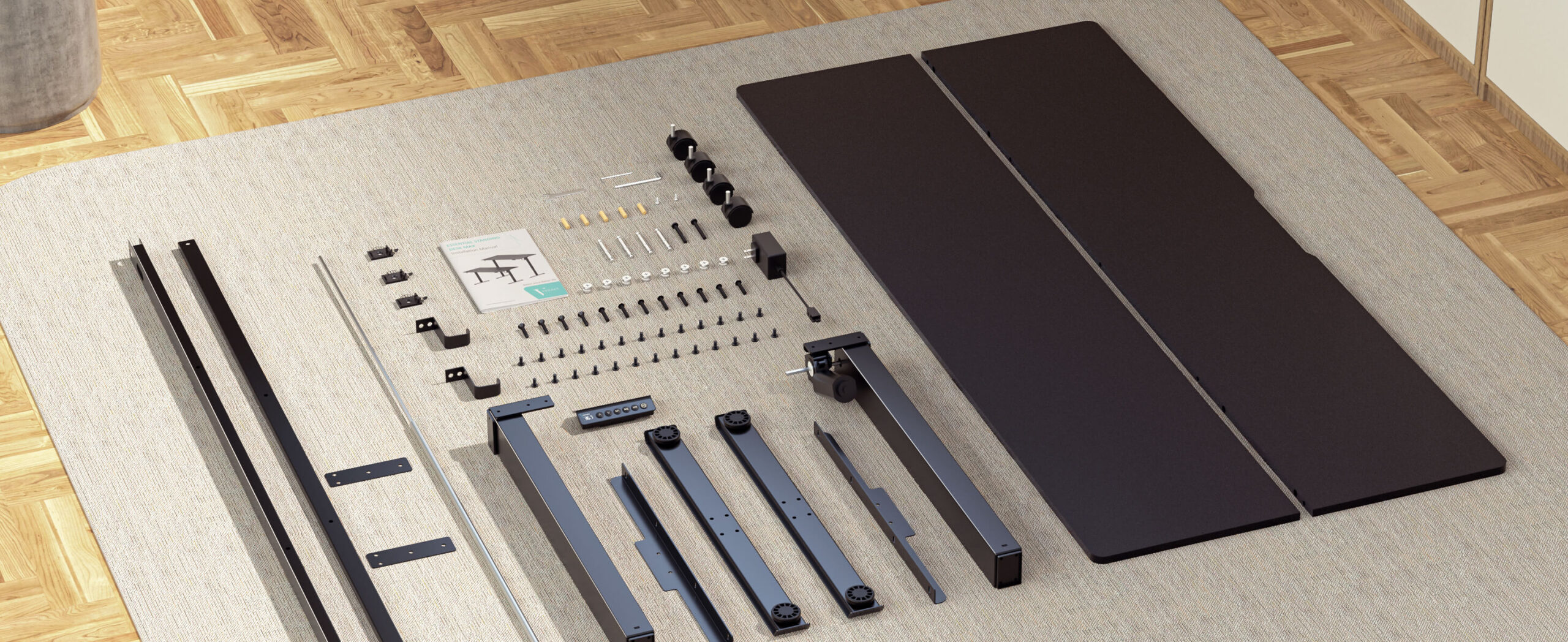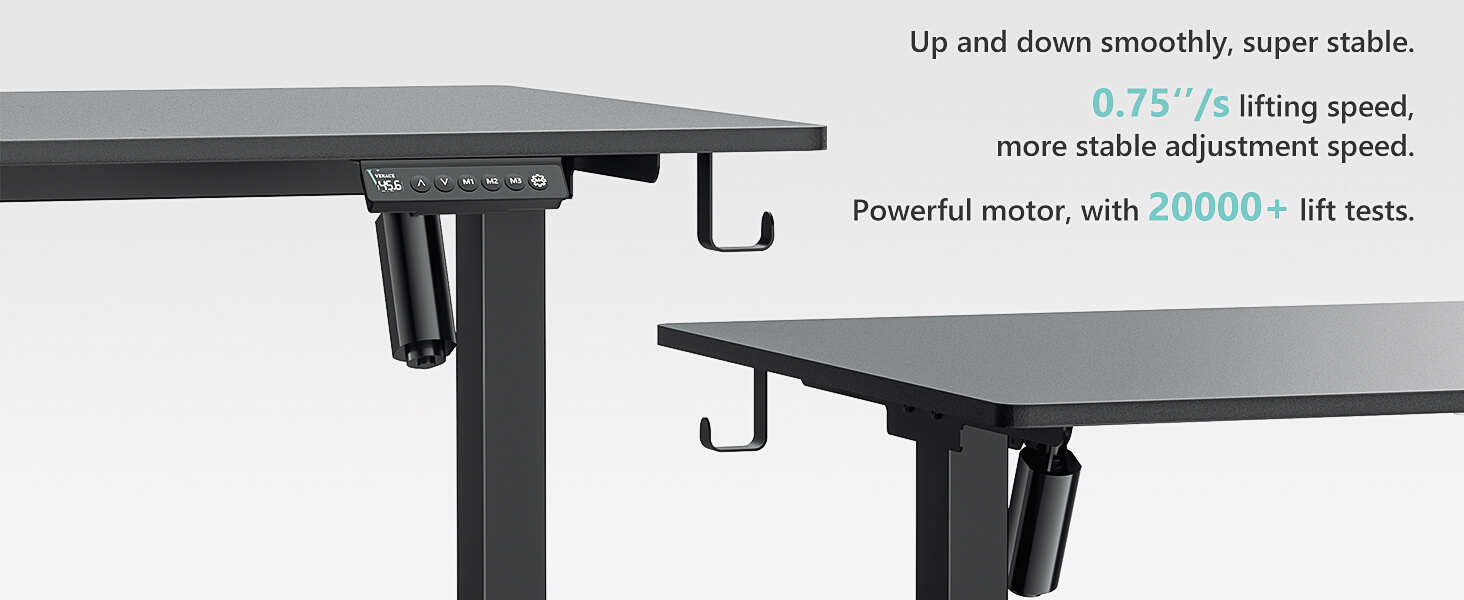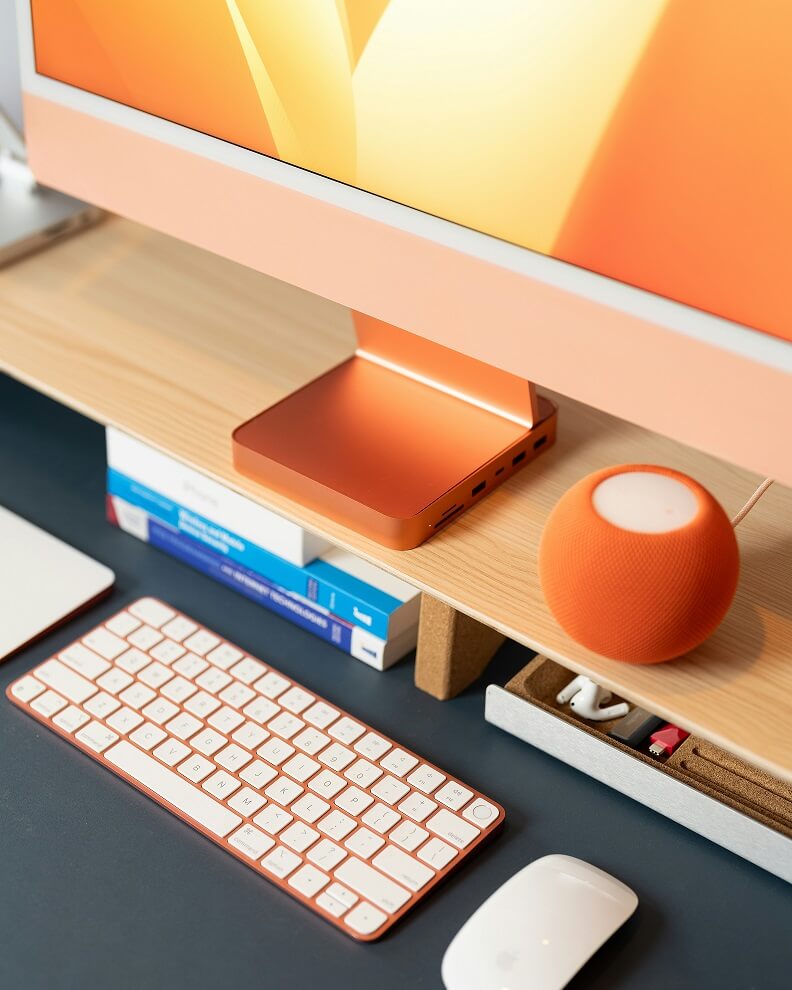A sit to stand desk can transform your workday. It allows you to switch between sitting and standing, helping reduce the risks of prolonged sitting. If you’re considering buying your first standing desk, there are a few key things to keep in mind. Let’s take a look at the most important factors to ensure you choose the right desk for your needs.

1. Manual vs. Electric: Which Adjustment Type is Right for You?
First, you’ll need to decide between a manual or electric sit to stand desk.
- Manual desks require you to adjust the height with a crank or lever. They are usually more affordable but can be more tiring if you adjust the desk often.
- Electric desks adjust with the push of a button, making them more convenient, especially if you plan to change your desk height frequently. They are pricier but offer ease of use.
If you plan to switch positions often, an electric standing desk may be a good investment. But if you only need occasional adjustments, a manual desk will work just fine.
2. Desk Size and Space Considerations
Think about the size of your workspace before choosing a sit to stand desk. You’ll want a desk that fits your room but also offers enough space for your computer, monitor, and other equipment.
If your office is small, a compact desk is best. But if you need more space for multiple monitors, a larger desk may be necessary. Just make sure the desk fits comfortably and doesn’t overcrowd your room.
3. Stability and Durability
You want a standing desk that’s stable and durable. A wobbly desk can disrupt your work and be unsafe for your equipment. Check the desk’s materials. Desks made from steel or solid wood tend to be more durable and stable.
Look for a model that’s built to last. Stability is especially important if you’ll be adjusting the desk frequently.
4. Weight Capacity
Consider the weight of your equipment. If you have heavy monitors or a lot of gadgets on your desk, make sure the desk can support the weight. Most sit to stand desks list their weight limits in the specifications.
Choose a desk with a weight capacity that comfortably supports all your equipment. This will ensure the desk stays stable, whether you’re sitting or standing.

5. Ergonomics: Comfort is Key
A sit to stand desk should make you feel comfortable. If your desk isn’t ergonomic, it could lead to discomfort or pain over time. The desk should be adjustable to suit both sitting and standing positions.
When standing, your arms should rest comfortably at a 90-degree angle. Your monitor should be at eye level to avoid neck strain. When sitting, your feet should be flat on the floor, and your thighs should be parallel to the ground.
Look for a standing desk that offers these features for both sitting and standing positions. If the desk doesn’t adjust to fit your needs, consider adding ergonomic accessories like a keyboard tray or monitor stand.
6. Ease of Use and Assembly
Before you buy, consider how easy the desk is to use and assemble. Some desks come fully assembled, while others require setup. If you’re not into DIY projects, look for a desk that’s easy to put together.
For ease of use, consider how the desk adjusts. Electric desks are simple to operate, while manual desks can be a bit more labor-intensive. Make sure the desk suits your preferences for both setup and adjustment.

7. Design and Aesthetics
Lastly, think about the look of your sit to stand desk. This desk will likely be a focal point in your office, so you want it to look good. Many standing desks come in different finishes, from modern metal frames to traditional wooden styles.
Consider the desk’s design and how it fits into your office’s aesthetic. Also, check if it includes cable management features to keep your workspace neat and organized.
Conclusion
Choosing the right sit to stand desk can make a big difference in your comfort and productivity. Consider factors like adjustability, desk size, weight capacity, and ergonomics when making your decision. Whether you choose a manual or electric desk, the goal is to create a workspace that allows you to work comfortably, stay productive, and maintain good posture. A standing desk can help you achieve that.
